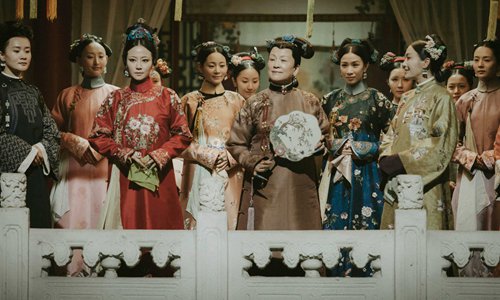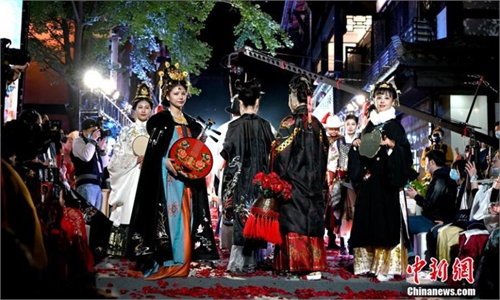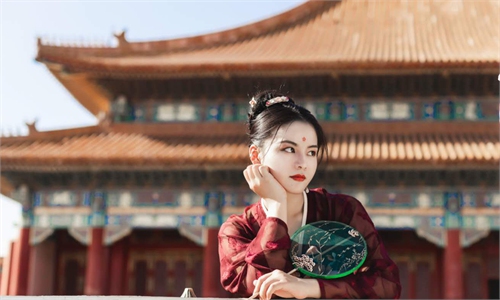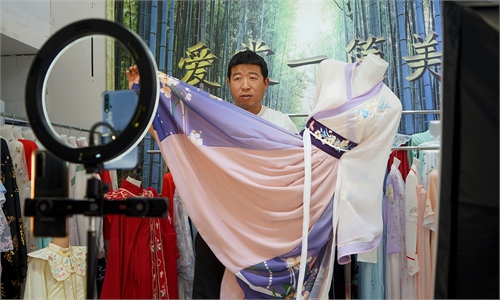ARTS / ART
Chinese costume drama promotes charm of traditional culture among international audiences

Promotional material for Story of Yanxi Palace and The Legend of Fuyao Photos: IC
Exquisite clothing made with the Chinese silk tapestry technique known as kesi, which was once used to make clothing for royalty since the Song Dynasty (960-1279), has been appearing in Chinese costume dramas. Not only domestic audiences are applauding the sharp increase in quality of the costumes appearing in such dramas, once upon a time criticized as "mass produced" and "plastic," audiences overseas are also getting a taste of traditional Chinese culture from film and TV dramas that are following the hot trend.Winding the clock back to 2018, the Chinese costume drama Story of Yanxi Palace was a true standout due to the production quality, particularly the costume and prop design. In addition to using the kesi technique to make royal character's gowns and fans, "hand push embroidery," a type of embroidery with roots in the folk art of Southwest China, and ronghua, a type of velvet-made hairpin that was famous during the Tang Dynasty (618-907) and is now part of Jiangsu Province's intangible cultural heritage are also being used to make costumes and accessories for these shows, almost making them real-life examples of China's intangible culture heritage.
"What makes today's garments more finely made is how different resources are being integrated. For example, we'd only look for factories and tailors before if we wanted such clothes, but now we are looking to collaborate with craftsmen in villages and also clothing design consultants, historians and fashion researchers. With them taking the lead in the garments, this can bring culture back to the people," Wang Yi, a costume design insider, told the Global Times on Saturday.
The 2018 drama is apparently not the only one that has taken costume design seriously. In 2020, another Beijing Opera-themed TV drama Winter Begonia also impressed audiences with more than 100 finely made Peking Opera costumes, even getting overseas audiences to appreciate the Chinese culture behind the dresses.
"I only have a stereotypical impression of such Chinese-style dresses, that they either all look like hanfu, or just want to look expensive and rich. But when I look quite closely at the dresses in the TV drama, I'm attracted by how the Chinese flowers are arranged on the fabric and also attracted by how such unique garments can reveal the personality of the Chinese opera performers… I want to do more research on Chinese design by referring to the opera garments…"Heenie, a 25-year-old South Korean textile student in London, told the Global Time on Saturday.
The costumes haven't just captured the attention of viewers; their popularity has also saved online garment businesses. In 2020, fans of the popular Chinese fantasy period drama Love and Redemption rescued a garment company in Guangzhou, capital of South China's Guangdong Province, from bankruptcy after snapping up 20,000 sets of the company's traditional Chinese hanfu clothing within a single week.



